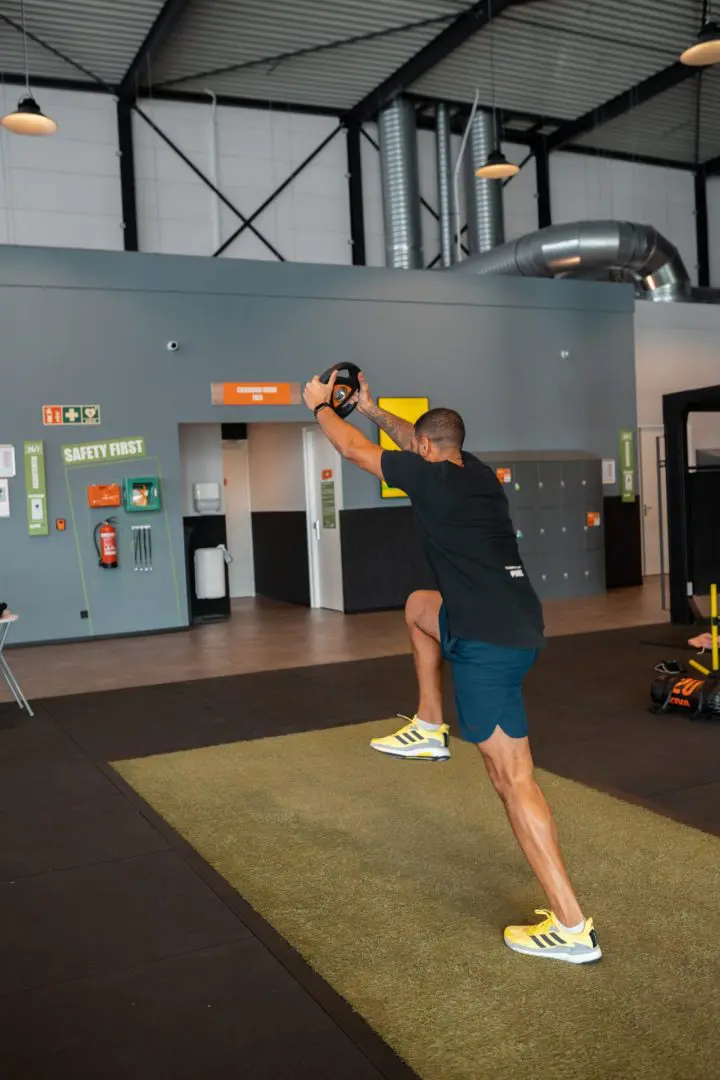The 3 best exercises for a big and strong back
We often see avid gym visitors with the goal of gaining more muscle mass and strength. Not surprisingly, sports/fitness has many positive effects on the human body and is a great way to achieve this goal. But what actually are the best exercises for creating a big and strong back? Especially for you, we have compiled a list of the best exercises to make your back big and strong. The muscle mainly responsible for the width of the back is the latissimus dorsi muscle. This muscle starts at the pelvis and along the spine, and goes from here to the upper arm. To create thickness in the back, we need the musculus rhomboideus, musculus trapezius (descendens, transversus and ascendens) and the musculus teres major.

1. Pull-up
A pull-up trains all the aforementioned muscles in one exercise. Super convenient! This exercise provides both an increase in muscle mass and muscle strength, provided of course the right conditions are met. Despite the fact that the pull-up can be a very effective exercise to add to your workout, performing a good pull-up is not that simple. As the pull-up can be very difficult for a beginner athlete, you can build it up by starting with assisted pull-ups or the lat pulldown with a wide handle. Performing a negative pull-up can also help you get stronger. When performing the pull-up, it is important to use correct technique. Therefore, make sure you start from a fully extended position. From here, you start by placing your shoulder blades down and back, followed by pulling your own body up. The movement ends when your chin rises above the bar. Make sure that the movement is performed in a controlled manner and, when returning to the starting position, you provide a slight stretch in the back again.
2. Cable row
The cable row comes up in just about every (split) schedule. It is an exercise that trains the latissimus dorsi, teres major, rhomboideus, trapezius, back of the shoulders, biceps and back extensors. So a whole mountain of active musculature! The standard version of the cable row starts with the arms extended and the back in the neutral position. You may even feel some stretching at the back. From here, the handle is moved towards the body, ending with the handle in line with the cable. In the last part of your movement, you really start looking for that extra muscle tension. So make sure the shoulder blades move towards each other in the end of the pulling movement. If you want to put a bit more emphasis on the middle back instead of the latissimus dorsi, you can choose to perform the rowing movement with the arms horizontal. Ruben, there is no consensus on how best to counter the lats in the endrange. well or not a slight extension thoracically?
3. Lat pulldown
The lat pulldown is an exercise that virtually everyone who has ever done strength training has had a return to in their workout. It is an exercise that, as its name suggests, lends itself to training the latissimus dorsi muscle (broad back muscle). Most effective here is a performance with the palms facing outwards (pronation position) where the bar is pulled towards the chest. Pulling the bar towards the chest provides more activation than pulling it behind the head, towards the neck. The width of the handle (close grip or wide grip) appears to make no difference in activation of the latissimus dorsi muscle. So here, do mainly what you feel comfortable with.
Besides performing the above exercises, it is important to realise that it is not just about choosing the right exercise. To get results, several factors are important. For instance, you need to pay attention to your posture, movement speed, and training frequency. In addition to these aspects, nutrition and sleep are of course also essential for recovery and muscle building! Research has shown that if we mainly want to focus on increasing strength, it is efficient to train with heavy weights and thus at a higher percentage of your 1RM (repetition maximum). If you mainly want to go for hypertrophy (muscle growth), a heavy load appears to be less important. You stimulate muscle growth by training between 1 and 30 repetitions, with an appropriate weight of course. Practice shows that the average fitness enthusiast wants something of both. Also read 'the 5 best exercises for back stiffness‘.
Want more guidance in training or to get rid of symptoms? Contact Fysiofitaal directly and make an appointment with a physiotherapist!

